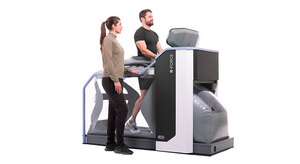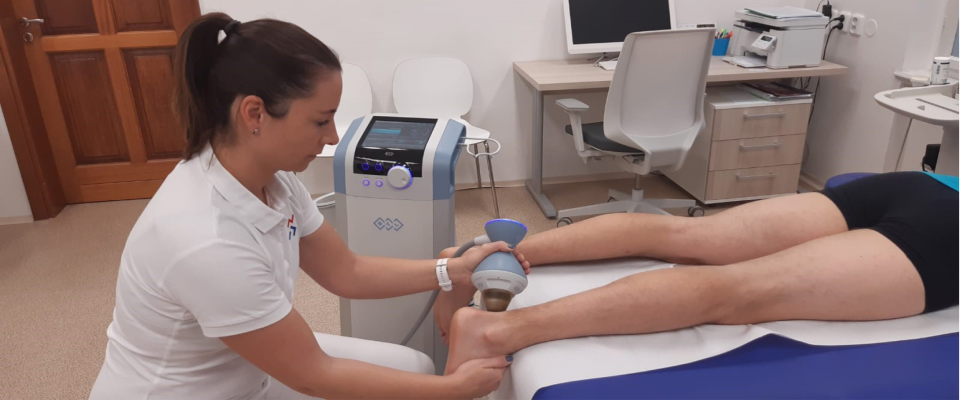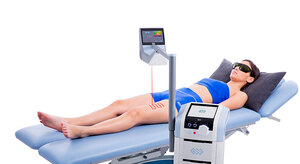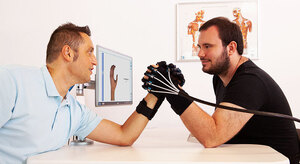RESULTS
A total of 149 patients received up to 6 treatments (3,5 ± 0,4 on average), depending on their diagnosis and state of health. Results will be presented for each diagnosis separately. A significant (p<0,01) difference was found between VAS baseline and VAS after the last treatment in all diagnoses.
Epicondylitis
For the patients diagnosed with epicondylitis, the VAS baseline results were 6.6 ± 1.3. From the baseline, VAS decreased to 4.5 ± 1.8. The difference of 2.1 ± 1.7 represents 31.9% reduction in pain. For 30 patients, data including the final intensity of 29.5 ± 7.1 were available.
Rotator cuff syndrome
In patients with rotator cuff syndrome, the perception of pain reduced from 6.4 ± 1.3 to 3.8 ± 1.6. The decrease corresponds with 41.5% (2.7 ± 1.6). The final intensity data of 38.0 ± 5.7 were obtained for 36 patients.
Plantar fasciitis
The VAS baseline for the group of patients with plantar fasciitis was 6.7 ± 1.7 and after the last therapy, the obtained VAS results were 3.7 ± 1.7. The difference between both VAS values is 44.8% (3.0 ± 1.8). For 39 patients of this group, there were available data about the final intensity of 34.6 ± 6.4.
Patellar tendinopathy
In the patellar tendinopathy group, VAS baseline results were 7.3 ± 1.0. A difference of 57.8% (4.2 ± 2.0) was found between VAS baseline and VAS after the last treatment. From baseline, VAS was reduced to 3.1 ± 1.5. The final intensity data were taken for 3 patients (38.7 ± 10.1).
Tendinosis of Achilles tendon
In patients diagnosed with Achilles’ tendinosis, the pain evaluation decreased from 5.8 ± 1.8 to 2.3 ± 1.6. The difference between VAS results represents 60.9% (3.5 ± 1.7) reduction in pain perception. For 10 patients, the final intensity data of 35.9 ± 6.7 were included.
CONCLUSION
FSWT is an effective modality in the treatment of patients diagnosed with epicondylitis, rotator cuff syndrome, plantar fasciitis, patellar tendinopathy and Achilles’ tendinosis based on its analgesic properties. The results of the present study proving short-term effects on pain reduction are encouraging but other studies with larger samples or comparisons with other conservative interventions should be implemented, to better understand the effects of FSWT and to unify optimal treatment parameters. For these reasons, continued research in this area is therefore of great importance.
Read the entire study here: Analgesic Effects of FSWT in Common Orthopedic Diagnoses
Check the technology used here: Focused Shockwave Therapy




